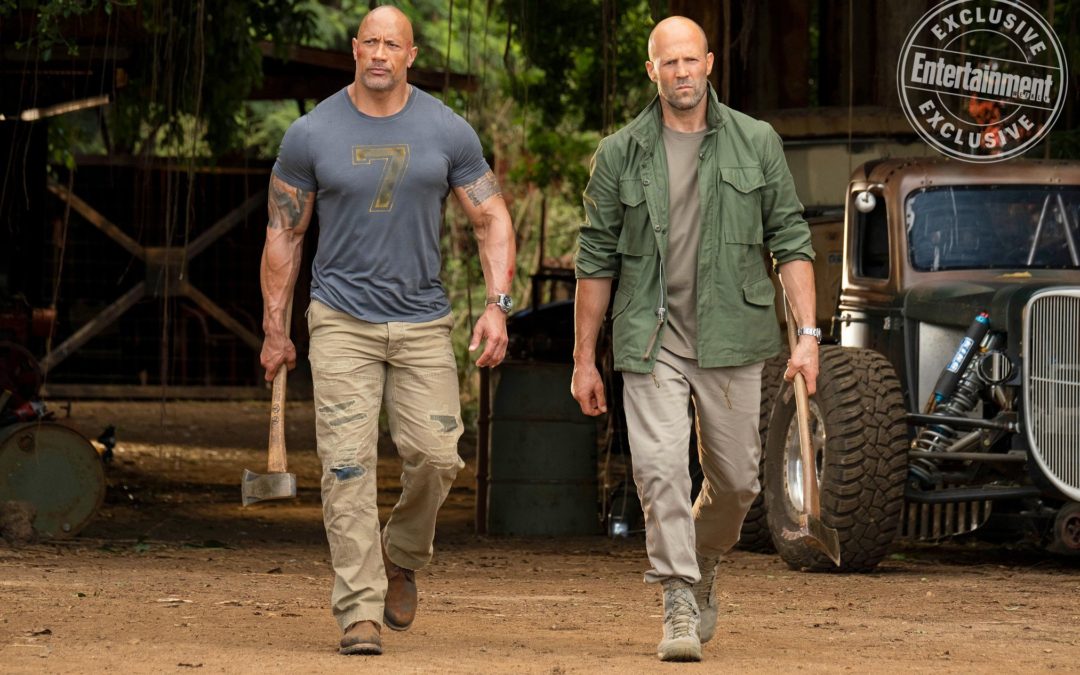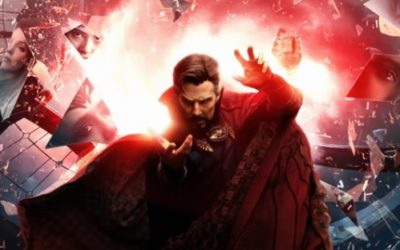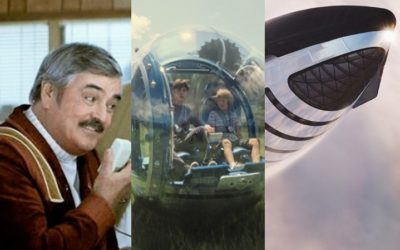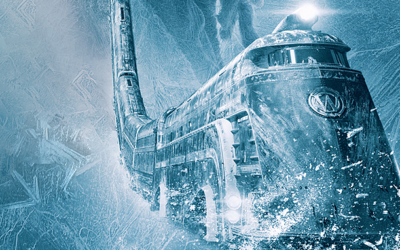Take a look at this picture from The Fast and Furious Presents: Hobbs and Shaw above. What jumps out to you?
Okay, yes, those are the two stars, Dwayne Johnson (left) and Jason Statham (right). What about it? Both are seriously tough guys.
Yeah, but Johnson is 6’ 5”.
Statham is 5’ 10”.
That’s eight inches of difference.
Your mileage may vary, but for me, someone who is eight inches shorter than me is coming up to my shoulder – and isn’t looking just a little bit shorter than me. This is a little bit of forced perspective at work.
Once you go with the idea that something’s up with the image, it’s fairly easy to spot: a quick look makes you think that Statham and Johnson’s feet are roughly the same distance from the camera, but more careful observation shows that they’re not. Also, consider the light. Judging from the shadows, it’s coming from the left of the image, so shadows are on the right side of the objects being illuminated. Statham is in full light. If they were truly walking side by side, he’d be in Johnson’s shadow.
This is forced perspective. Something that is farther away looks smaller, something that it nearer looks larger. Play with the position of the two objects (or people) and the depth of the field (that’s through focusing the lens), and you can trick the viewer into thinking that the two objects are the same size and are in the same space.
In photography and film, this effect (assuming not digital manipulation) is achieved by the placement of the objects (as shown above), the use of a wide-angle lens (35 mm or greater), and an appropriate f-stop setting, which determines the depth of field (the distance from the camera that is in focus.)
Optional sidebar quick explanation: The f-stop setting determines how much light is being recorded/shot. Aside from artistic reasons for under and overexposure, the amount of light let into the camera determines if a shallow or deep length of space is in focus.
Now, before going on, let’s get this out of the way – there is the full-on possibility that the image we’re looking at here has been digitally manipulated. Okay, actually, it’s more like a probability. That’s cool – it was probably tweaked a little after the shot was taken. No harm, no foul. But let’s try and do it without manipulation.
Placement of the Objects
So how would you frame a shot so that Dwayne Johnson and Jason Statham appeared to be the same height?
Ratios.
We want Johnson and Statham to appear to be roughly the same height. But they’re not. Let’s change their heights into inches just to make the math a little easier:
Dwayne Johnson: 6’ 5” = 77 inches
Jason Statham: 5’ 10” = 70 inches
Divide Johnson by Statham, and you get 1.1. A Dwyane Johnson is 1.1 times a Jason Statham. It’s not a lot, which would make the shot easier. So – in the shot, we need to make Statham look 1.1x larger or make Johnson look 1.1x smaller. That’s easy – Statham just has to be 1.1x closer to the camera than Johnson is.
Let’s say the distance between the camera and Johnson is about 11 feet (132 inches). If we want Statham to look 1.1x bigger, he needs to be closer to the camera. How much closer? 1.1 times. You saw that coming, right?
So:
132 inches/1.1 = 120 inches (10 feet)
Statham needs to be placed 10 feet from the camera, compared to Johnson’s 11 feet.
Set the focus and f-stop on a camera, and boom – the two actors look like they’re just about the same height. Even though they’re not.
For most of us, taking pictures using forced perspective with our phones is a bit of a guess-and-check system. But – for the more mathematically inclined among us, professional filmmaker John Hess has it all laid out – and even provides a spreadsheet.
A side note here – if you’ve seen Hobbs and Shaw, the entire film is an exercise in making everyone seem like they’re the same height. Again, Johnson is 6’ 5”, Statham is 5’ 10”, Vanessa Kirby is 5’ 7”, and Idris Elba is 6’ 2”, yet all of them look to be roughly the same height when on screen. It’s like the opposite of the trickery that was done on The Lord of the Rings, where forced perspective was used to make Hobbits small and humans…well, human-sized. Everyone in Hobbs and Shaw had to be roughly the same size when they weren’t.
Where Else?
Along with goofing with your camera, forced perspective is often built into structures to give the illusion of size and/or height when it’s just not there. This is occasionally done in regular architecture, but more famously done with themed architecture that you find in say, Las Vegas, and most famously, the Disney Parks.
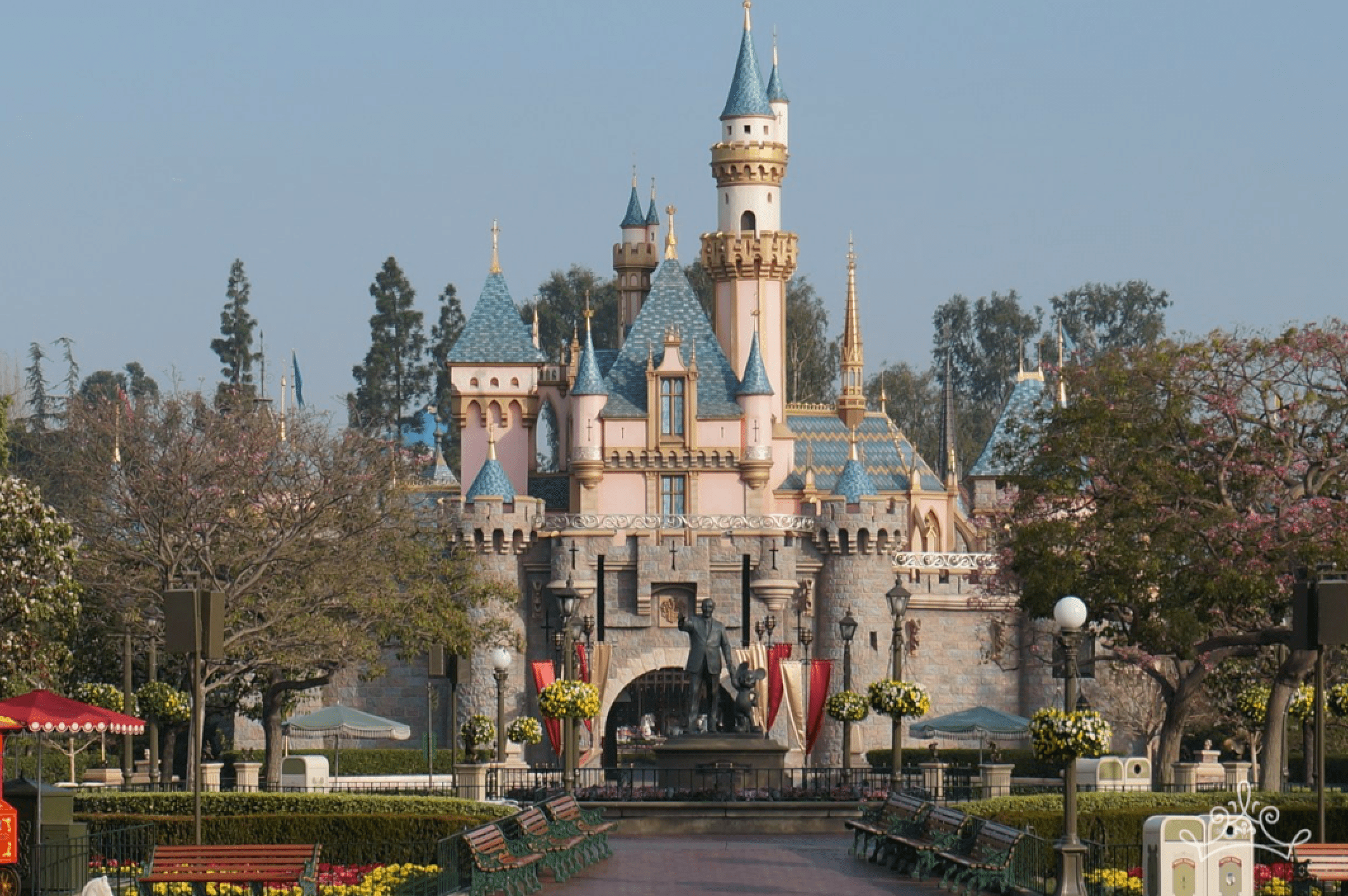
Sleeping Beauty Castle is not as big as you may thing (c) Disney
Disneyland’s Sleeping Beauty Castle is only 23 meters high, but ask any guest about their memories of it – everyone remembers it to be much larger. Thanks forced perspective.
Disney often builds their new buildings at a 1 – ⅝ – ½ scale. The first floor is built full scale, the second-floor facade is built at 5/8ths scale of the first, and the third-floor facade is built at ½ scale of the first. The overall effect is to make the buildings look taller than they are.
In the case of Sleeping Beauty Castle, the bricks at ground level are large and get smaller with each successive level. Each ratio between the size of the bricks is set to trick the eye.
Thanks to Jamal Igle for initially pointing this out. Check out his stuff!


